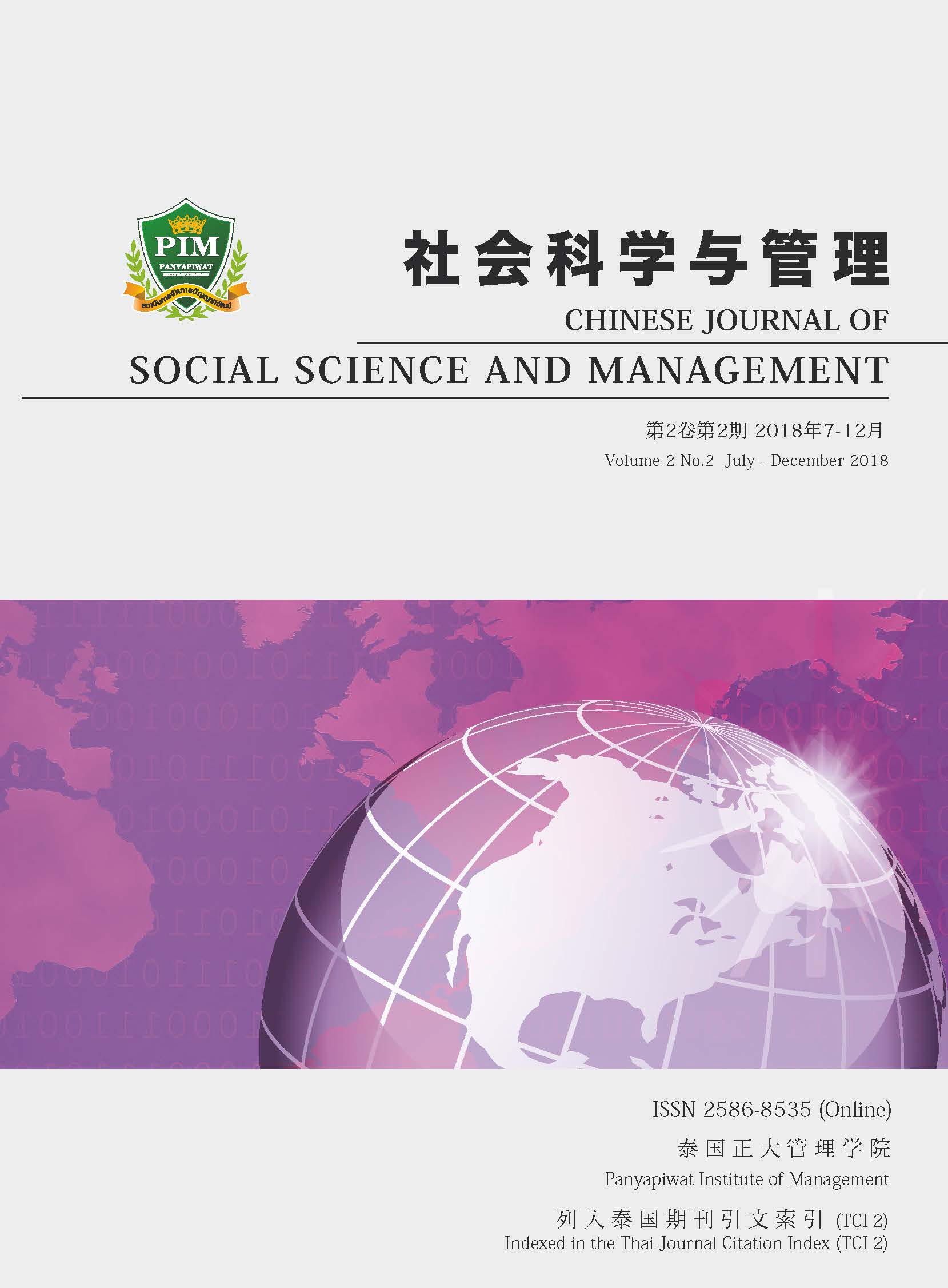A HISTORICAL EXAMINATION ON SYNTACTIC FUNCTION OF TRANSITIVE SEPARABLE WORDS “DANXIN” AND ITS PRESENTATION IN TEACHING MATERIAL
Main Article Content
Abstract
Based on ancient Chinese and modern Chinese corpus of Peking University, we made a historical
examination on syntactic functions of transitive separable words “danxin”. The study found that the
separable words “danxin” can take objects and frequency of use is higher from Ming dynasty to modern
times, and its syntactic function expand continuously. Furthermore, after investigated twenty sets of
Teaching Chinese as a Foreign Language (TCFL) textbook at elementary and intermediate level, we found
the presentation of separable words “danxin” in each textbook is different and its shortcomings are
obvious. In view of the teaching Chinese as a foreign language, we put forward the corresponding
suggestions on how to deal with the separable words in TCFL textbooks.
Article Details
Chinese Journal of Social Science and Management Editorial Division
The Office of Research and Development, Panyapiwat Institute of Management
85/1 Moo 2, Chaengwattana Rd., Bang Talat, Pakkred, Nonthaburi 11120, Thailand
Tel. 02 855 01048 E-mail: cjssm@pim.ac.th
References
Chen, B. & Zhu, Z. P. (2004). Learn Chinese with Me. Beijing: People’s Education Press. [in Chinese]
Chen, Z. (2002). Bridge: A Practical Intermediate Chinese Course. Beijing: Beijing Language and Culture University Press. [in Chinese]
Deng, S. X. (2009). A Pedagogical Grammar of Chinese. Taipei: Crane Publishing. [in Chinese]
Deng, Y. (2003). The Primary Textbooks of Spoken Chinese as a Foreign Language. Beijing: Peking University Press. [in Chinese]
Ding, Y. (2002). A Pragmatic Analysis of Verb-Object Separable Words. Linguistic Studies, Special Issue, 148-151. [in Chinese]
Fan, Y. N. (2007). Can a Verb-Object Split Table Word Take an Object? Language Teaching and Linguistic Studies, 5, 22-25. [in Chinese]
Gu, Z. B. (2000). Standard Chinese. Beijing: People’s Education Press. [in Chinese]
Guan, D. X. (2005). A Practical Business Chinese Reader. Beijing: Peking University Press. [in Chinese]
Guo, R. (2002). A Study of the Word Class System in Modern Chinese. Beijing: The Commercial Press. [in Chinese]
Huang, Z. C. (2002). A New Chinese Course Book. Beijing: China International Book Trading Corporation. [in Chinese]
Kang, Y. H. & Lai, S. P. (2005). Conversational Chinese 301. Beijing: Beijing Language and Culture University Press. [in Chinese]
Li, C. N. & Thomson, S. A. (1981). Chinese Grammar. (H. Shuan-fan, Trans.). Taipei: Crane Publishing. [in Chinese]
Li, X. Q. (2005). Boya Chinese. Beijing: Peking University Press. [in Chinese]
Li, X. Q. & Dai, G. Y. & Guo, Z. H. (2000). A new perspective: Context, Function and Structure in Teaching Chinese. Beijing: Peking University Press. [in Chinese]
Li, Y. M. (1997). The Dictionary of Contemporary Chinese Usage. Beijing: Beijing Language and Culture University Press. [in Chinese]
Lin, C. J. (2011). Separable Words in Modern Chinese and Their Acquisition and Pedagogy Relating to Thai Learners. Master’s Thesis, Mae Fah Luang University. [in Chinese]
Liu, D. Y. & Zhang, Y. (2005). New Concept Chinese. Beijing: Peking University Press. [in Chinese]
Liu, X. (2007). New Practical Chinese Reader Textbook. Beijing: Beijing Language and Culture University Press. [in Chinese]
Lu, Z. W. (1957). Chinese morphology. Hong kong: Zhonghua Book. [in Chinese]
Lv, W. H. (1999). The Meaning of the Classification of Phrase Words in Teaching Chinese as a Foreign Language. Language Teaching and Linguistic Studies, 3, 130-135. [in Chinese]
Ma, J. F. (2005). Great Wall Chinese. Beijing: Beijing Language and Culture University Press. [in Chinese]
Peng, J. (2007). Chinese Textbook. Guangzhou: Jinan University Press. [in Chinese]
The College of Intensive Chinese Training at Beijing Language and Culture University. (2005). Sucheng Hanyu Chuji Jiaocheng. Beijing: Beijing Language and Culture University Press. [in Chinese]
Wang, H. F. (2011). The Study on Separable Words’ Separated Form Function of Mandarin Chinese. Beijing: Peking University Press. [in Chinese]
Wang, X. Z. (1988). The Analysis of Verb-Object Separable Words. Chinese Teaching in the World, 3, 147-149. [in Chinese]
Wang, W. (1991). The Analysis of Literary Works Selection of Intermediate Teaching Material. Selected Papers for the Fourth Teaching of Chinese as a Foreign Language. Beijing: Peking University Press. [in Chinese]
Wu, S. P. (2002). Speak Chinese. Beijing: Beijing Language and Culture University Press. [in Chinese]
Wu, Z. W. (2003). Contemporary Chinese. Beijing: Sinolingua Press. [in Chinese]
Yang, J. Z. (2009). Hanyu Jiaocheng. Beijing: Beijing Language and Culture University Press. [in Chinese]
Yang, Q. H. (1995). The Dictionary of Modern Chinese Separable Words. Beijing: Beijing Normal University Press. [in Chinese]
Zhao, J. M. (1984). The Discussion of the Expanded “V+N”. Language Teaching and Linguistic Studies, 2, 4-22. [in Chinese]
Zhao, J. M. (2002). Road: Chinese Conversation for Foreigners. Beijing: Beijing Language and Culture University Press. [in Chinese]
Zhao, S. H. & Zhang, B. L. (1996). The Determination and Characteristics of Chinese Separable Words. Language Teaching and Linguistic Studies, 1, 40-51. [in Chinese]
Zhou, S. Z. (2001). Is Chinese Separable Words a Word? Journal of College of Chinese Language and Culture of Jinan University, 4, 41-46. [in Chinese]
Zhu, Z. Y. (2003). Shortcut: Intermediate Chinese Crash Course. Beijing: Beijing Language and Culture University Press. [in Chinese]


